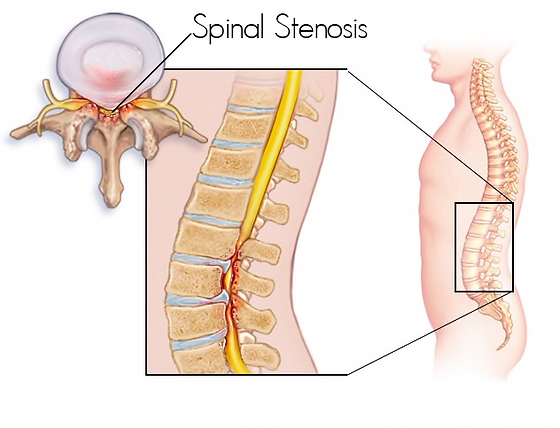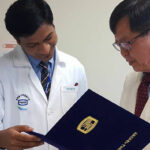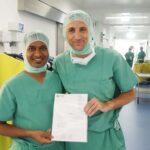
Lumbar Canal Stenosis
Lumbar canal stenosis is a medical condition in which the spinal canal narrows and compresses the nerves and blood vessels at the level of the lumbar vertebrae . It is most commonly caused by osteoarthritis, which is the gradual wear and tear that happens to your joints over time ¹. Lumbar canal stenosis can cause pressure on your spinal cord or the nerves that go from your spinal cord to your muscles .
symptoms of lumbar canal stenosis:
Symptoms of lumbar canal stenosis include pain, numbness or weakness in the legs, groin, hips, buttocks, and lower back. Symptoms usually worsen when walking or standing and might decrease when lying down, sitting, or leaning slightly forward . Early lumbar spinal stenosis may have no symptoms. In most people, symptoms develop gradually over time .
causes of lumbar canal stenosis :
The most common cause of lumbar canal stenosis is wear and tear or aging which is also known as degeneration . Other causes include overgrowth of bone, herniated or bulging discs, tumors in the spine, thickened ligaments, spinal injuries or accidents . In some cases, it is congenital (present by birth) – it is known as congenital spinal stenosis .
How is lumbar canal stenosis diagnosed?
Diagnosis of lumbar canal stenosis involves taking medical history and physical examination. Imaging tests such as X-rays of your lumbar spine, CT scan, Magnetic resonance imaging (MRI) and Electromyography (EMG) are used to check the abnormalities in bones and joints, provide detailed images of nerves and disc and evaluate the abnormalities in electrical activity produced by skeletal muscles .
The treatment for lumbar canal stenosis depends on the severity of the condition and the symptoms experienced by the patient. Treatment options include physical therapy, medications such as nonsteroidal anti-inflammatory drugs (NSAIDs), corticosteroids, and muscle relaxants, epidural steroid injections, and surgery . Physical therapy can help improve flexibility and strength in the back muscles and reduce pain. Medications can help reduce inflammation and pain. Epidural steroid injections can help reduce inflammation around the spinal nerves and relieve pain . Surgery is usually considered when other treatments have failed or when symptoms are severe .







